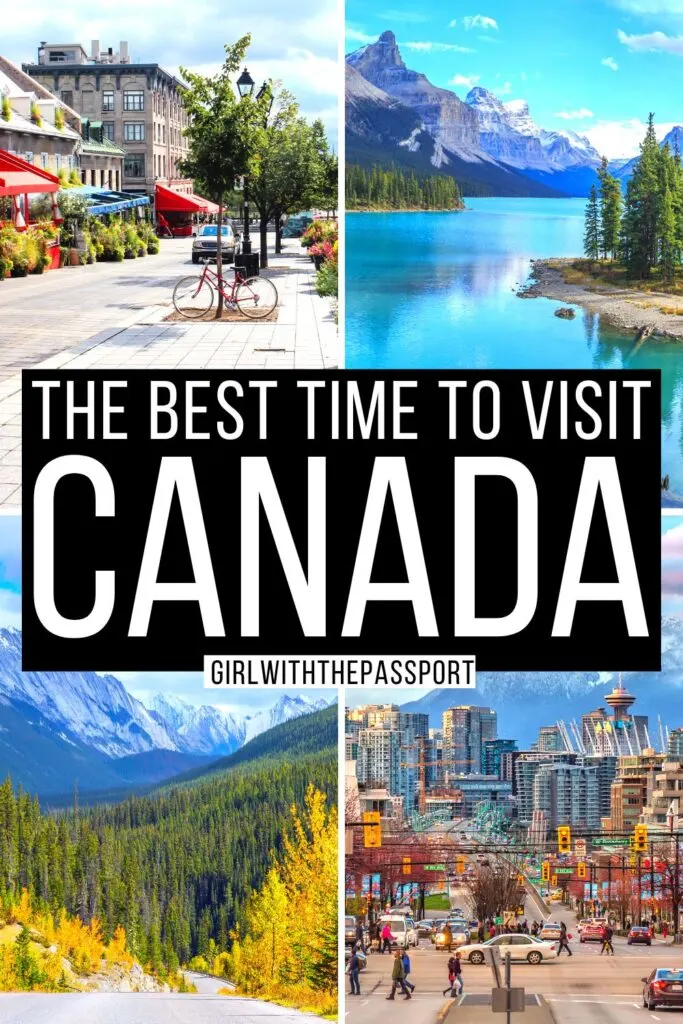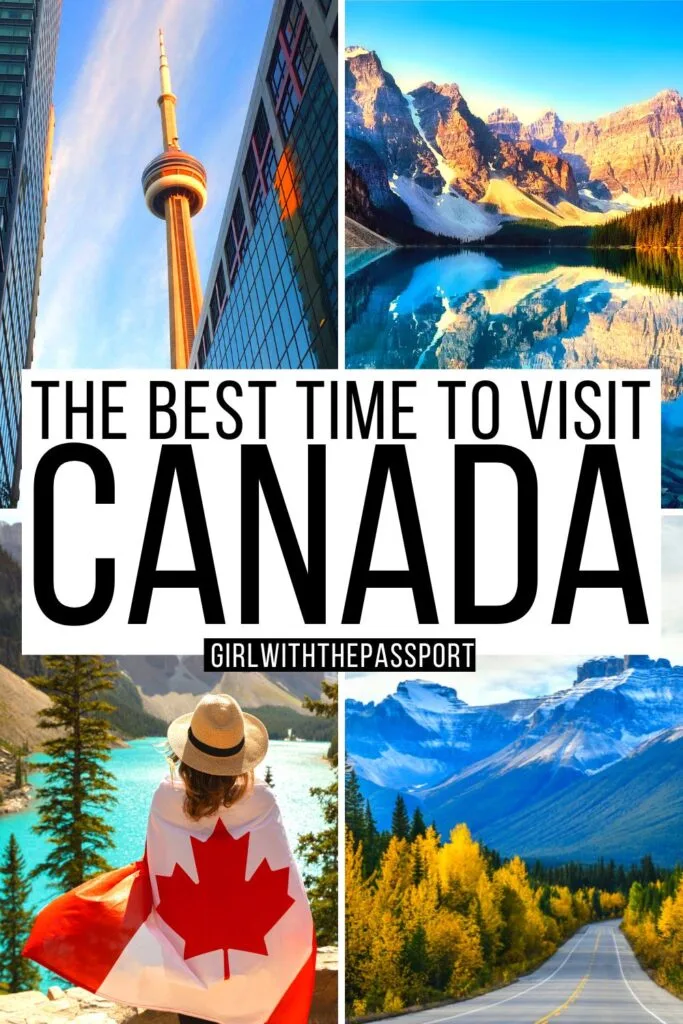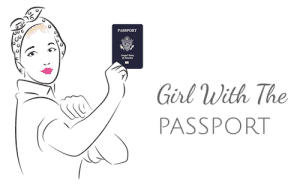Planning a next-level awesome trip to Canada but unsure about when is the best time to visit Canada is for you?
If so then this giant guide on when to visit Canada is totally for you. Not only does it contain secret expert tips from a real local who was actually born here, but it breaks down the best time to visit Canada depending on where you want to go and what you want to do during your visit.
Additionally, you’ll receive detailed info on what the weather is like based on the month and the region you are visiting – something that makes trip planning a whole lot easier.
So, stop guessing and start creating the Canada itinerary of your dreams with this massive guide on when to visit Canada.
This post may contain affiliate links. Please see my disclosure for more information. As an Amazon Associate, I earn a small commission from qualifying purchases.
When is the Best Time to Visit Canada?
Truth be told, most Canadians will say it’s always a great time to visit! In general, though, the best time to visit Canada is between June through October. After all, during this time visitors will experience the best weather.
Because during the summer, from June to the end of August, the temperatures are warm and the sun is shining. Plus, all seasonal businesses and attractions are open. Then in the fall, from September through October, temperatures are still comfortable and the bugs of summer are long gone.
However, for those looking to ski and snowboard, the best time to visit Canada is in the winter months.
Canada in the Winter – December through March

One of the best times to visit Canada is in the winter! Whether it’s for the Christmas markets, the festivals or to hit the slopes, there’s something for everyone to do throughout the season!
That being said, December is a busy and often expensive time to travel anywhere. And Canada is no different. Although, if you’re visiting in January and February this can cut travel costs dramatically since this is the off-peak season!
However, do be aware that January and February are the coldest months of the year in Canada. Therefore, temperatures routinely average between 23°F to 5°F and can drop to as low as -40°F.
But, if you can handle the cold then you can also attend many top festivals in Canada since they usually take place in the winter.
Some of the best include the Carnaval de Quebec in Quebec City! It’s known as the world’s largest winter festival and has been running for well over 100 years. The festival takes place every February and includes skating, concerts, snow sculptures, and more!
Another must-experience winter festival in Canada is Ottawa’s Winterlude! The event takes place over three weekends in February. It also features a variety of fun activities spread out across the city during the event.
So, eager visitors can skate the world-famous Rideau Canal Skateway, enjoy music, and partake in various cultural and culinary celebrations as they enjoy the best time to visit Canada.
Plus, visitors will find a ton of wonderful Christmas markets to enjoy. And then winter sports enthusiasts will love the world-renowned skiing and snowboarding to be found all throughout the country.
Yup, you’ll find a long list of epic ski resorts all across the country! But, a few top destinations for skiing are in the Rockies of Alberta and British Columbia. Plus, notable resorts include Whistler Blackcomb, which is close to Vancouver, and Fernie, which is just south of Banff.
You can even warm up in some of the best hot springs in British Columbia.
Canada in the Spring – April and May
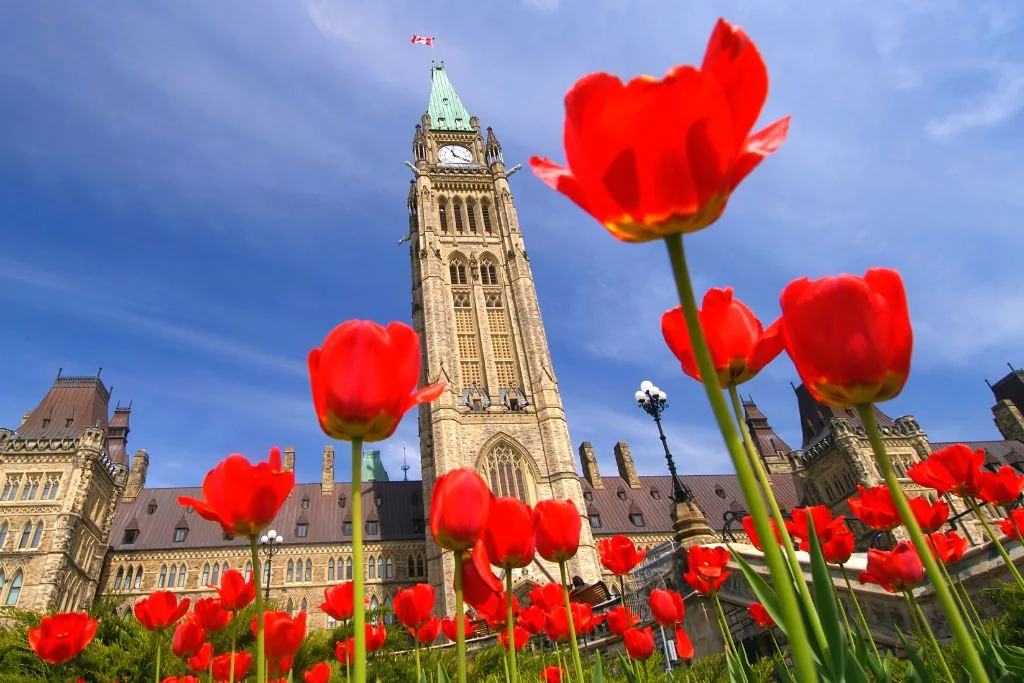
Spring in Canada can be a beautiful time to visit. However, it can also be one of the wettest times to go!
Plus, some regions in Canada can get light snow right through into May. And then with the winter thaw, the ground can get super mudday.
With that said, spring is a great time to visit and is easily the best time to visit Canada for many reasons!
See, for many provinces in Canada, the snow is starting to melt or is completely gone. For example, spring usually arrives earlier on the west coast, as do the flowers.
Therefore, visitors can enjoy average temperatures above 32°F. Plus, you’ll be beating the summer crowds and high-ticket prices.
There are aksi a ton of fun things to do in the spring in Canada! Because as the old saying goes, with all those showers, you’ll find plenty of flowers!
As a result, flower festivals spring up (pun intended) all across the country in the spring. And one of the best spring festivals in Canada is the Vancouver Cherry Blossom Festival.
The event takes place every year from the end of March through the middle of April. So, throughout the city, you’ll find a variety of activities like musical shows, workshops, and plenty of cherry blossoms in full bloom!
Additionally, another top attraction that makes spring the best time to visit Canada is the Canadian Tulip Festival in Ottawa!
See, every May in Canada’s capital that are millions of tulips planted! As a result, this incredible festival boasts a wealth of colorful blooms that spread out across the city and that are perfectly complemented by food trucks, walking tours, and other pop-up events.
Additionally, spring is the time of year when that sweet gold (aka maple syrup) that Canada is best known for starts a-flowin’!
So, if you’re looking to taste maple syrup in all its forms then visit one of the many maple syrup festivals that take place throughout Ontario and Quebec. Many are home to a wide assortment of fun activities like wagon rides, maple taffy tastings, and more!
Canada in the Summer – June through August
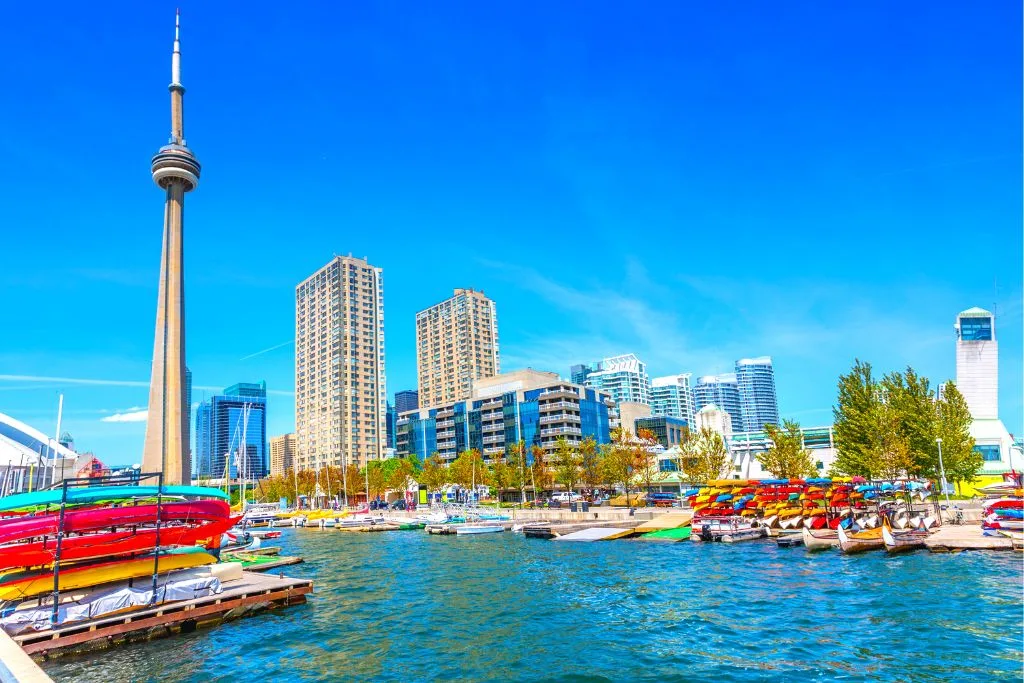
Summer in Canada is one of the best times to visit! There’s heat, sun, fun, and a ton of things to do!
In fact, many people travel to Canada in the summer for the epic hiking trails, incredible camping spots, beautiful lakes, and endless Quebec road trip possibilities!
And that’s mainly because Canada’s weather from June through August is pretty dang ideal. So, on both the east and west coasts expect average temperatures in the low 70s °F.
Then in the Prairies, Ontario, and Quebec it’s much warmer and averages between 77°F and 86°F. Though, it can occasionally rise to 104 °F – perfect weather for the beach!
Plus, added bonus? The summer months in Canada are filled with exciting festivals and events!
And one of the biggest celebrations of the year is July 1st, aka Canada Day! Therefore, across the country, you’ll find a bunch of events taking place during this long weekend, including epic fireworks displays.
However, a few top cities to celebrate Canada Day in include Toronto, Ottawa, Montreal, and Vancouver.
Plus, this is the time of year when the world’s largest jazz festival takes place in Montreal, Quebec!
In fact, between June and July over 3,000 musicians from across the world descend on the city. Accordingly, most of the streets in downtown Montreal become pedestrian-only to welcome millions of visitors to the metropolis.
Then in Calgary, Alberta, another top event in Canada takes place every July. Yup, The Calgary Stampede is a beautiful combination of fair and rodeo! The event also features plenty of fun things to do including concerts, parades, agricultural exhibitions, rides, and more!
Yet another summer tradition in Canada that makes summer the best time to visit Canada is folk festivals!
A few famous ones can be found in Orillia, Winnipeg, Vancouver, and Newfoundland! Most of these artsy festivals showcase a variety of musicians across numerous stages as well as artisan markets and food trucks.
Canada in the Fall – September through November
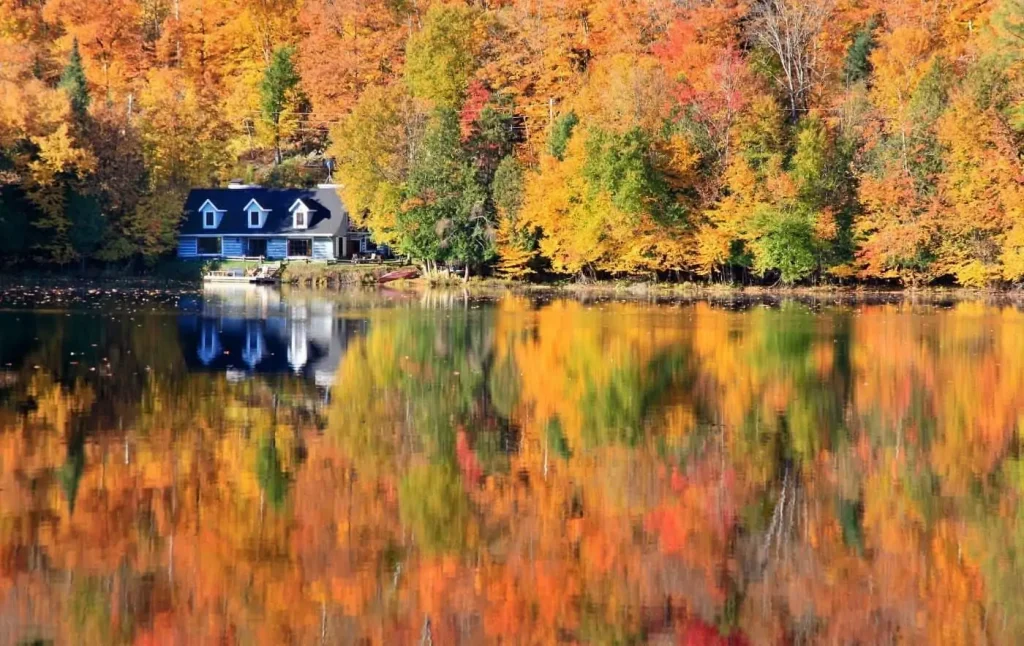
Many say summer is the best time to visit Canada. However, many others say it’s in the fall!
In fact, autumn in Canada extends from September through to the end of November. It’s also a great season for budget travelers looking to avoid peak season prices and large hordes of tourists.
Just be aware that temperatures vary greatly depending on where you are in the country. But, average daily temperatures are generally between 40°F to 70°F.
So, while it’s a bit cooler than the summer months, fall in Canada means fewer thunderstorms and much fewer bugs. However, snow can start as early as October in many areas, so be prepared.
And the top attraction in Canada in the fall is the incredible fall foliage! So, many people travel to Canada for the chance to experience the color change seen across the trees in the autumn.
So, a few top places to see fall colors during the best time to visit Canada include Ontario’s Muskoka region, Alberta’s Rocky Mountains, Cape Breton, and the Laurentian Mountains in Quebec.
Plus, one of the best fall festivals of them all takes place in BC’s Okanagan Valley. Yeah, The Okanagan Wine Festival is held every October and is perfect for anyone looking to enjoy some of the best wines in the country, in addition to supremely scenic views.
Plus, autumn in British Columbia means that many people come to see the Salmon Run! In fact, this incredible event is when millions of sockeye salmon collectively swim up river to spawn.
It’s truly a sight to see! and a couple of great places to witness this natural phenomenon are Vancouver, Victoria, and Port Alberni.
And then any movie buffs out there will love to visit Toronto in September! Because every year stars descend upon the city for the annual Toronto International Film Festival.
So, expect a ton of red carpet film premieres as well as talks with casts, and workshops that spring up all across the city.
When to Visit Canada for Good Weather?
For the best weather in Canada, you’ll want to visit between June and August. This is peak season and filled with warm and sunny days. Temperatures can hit 85°F, making it perfect for visiting beaches and enjoying outdoor adventures.
And while summer provides visitors with the best weather, it’s also peak tourist season. So, you’ll want to keep that in mind when planning your trip. Plus, summer also means plenty of bugs and humidity, depending on where you go!
However, in September and October, you’ll generally find nice weather too! It all just depends on your comfort and what you want to do. Because comfortable temperatures fall temperatures are perfect for hiking and include plenty of sunny days with no bugs!
Best Time to Visit Canada – British Columbia Weather
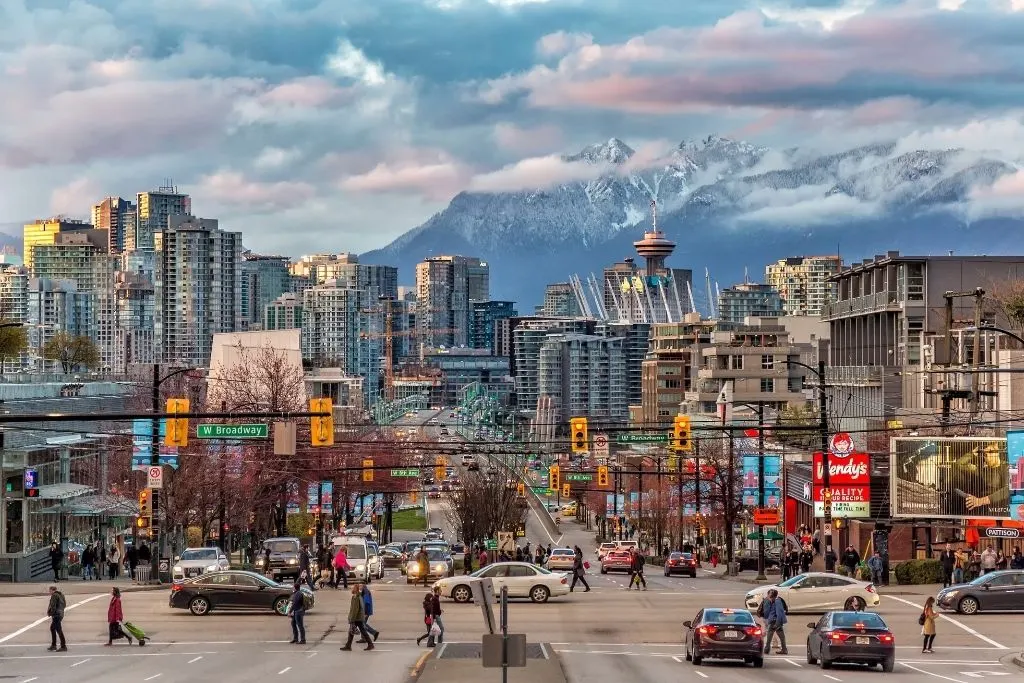
British Columbia has the most consistent weather when compared to other regions of Canada. Although, you’ll definitely get weather extremes that result in some of the wettest and driest places in Canada.
And that’s mainly because the climate here is influenced by both the Pacific Ocean and nearby mountain ranges.
In particular, the southern coast of BC is mild throughout the year. So, daytime temperatures average around 68°F. Plus, this area is known for having the mildest winters in Canada since it seldom gets below freezing here.
In contrast, the interior of British Columbia sees much warmer daily highs that can reach 86°F in the summer months. Then in the winter daily highs can easily dip below -4°F.
Additionally, many areas of BC, like Vancouver, don’t see much snow but instead get lots of rain throughout the winter. Though, the further north you go the more snow you’ll see.
Best Time to Visit Canada – Alberta Weather
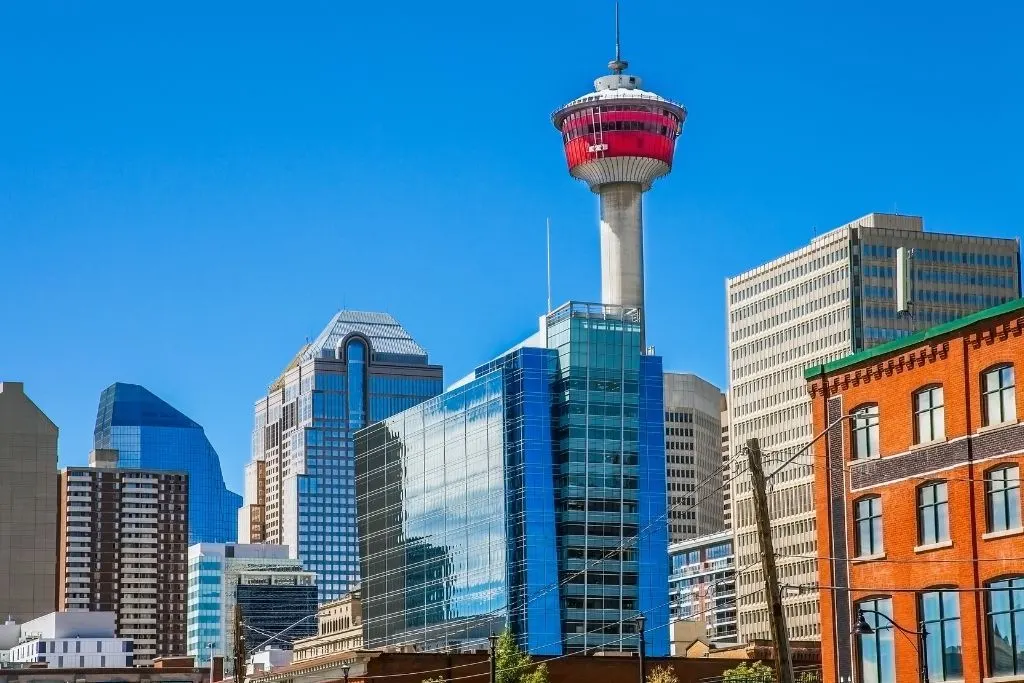
This may surprise you but Alberta lays claim to the most days of sun out of any other province in Canada. It’s also known for having extremely hot summers and brutally cold winters.
In particular, Calgary sees comfortable temperatures in the summer. However, their winters are long, snowy, and extremely cold. Therefore, temperatures can vary greatly between 12°F to 75°F.
And the coldest month in Alberta is January, which has daily average temperatures of around 21°F. However, it can easily fall below -4°F, or colder! You’ll also find plenty of snow in the mountainous regions of Alberta. Though, much of the rest of the province stays mostly dry in the winter.
Another thing to note is that Alberta is home to the Chinook winds. And what this means is that the dry air from the Pacific Ocean drops down across the Rockies’ eastern slopes and causes the temperatures to rise by 40 °F very quickly.
Best Time to Visit Canada – The Prairies (Saskatchewan and Manitoba) Weather
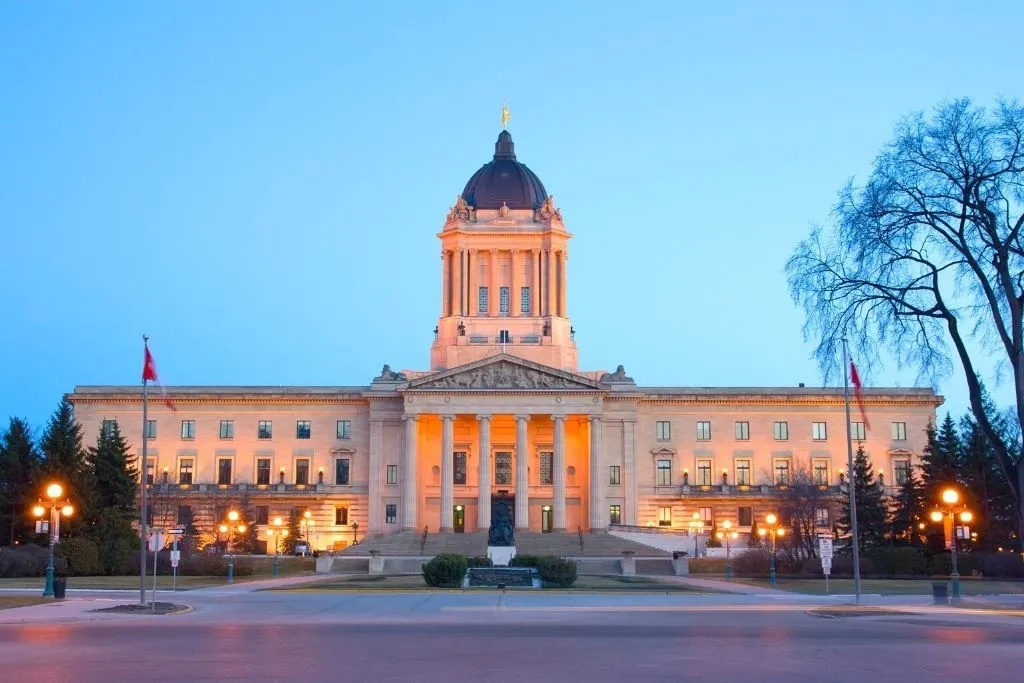
Weather is all about extremes in the Canadian Prairies! Because thanks to massive amount of Arctic air, the Prairies are considered one of the coldest places in Canada in the winter.
The Prairies also have dry semi-arid climates that result in average precipitation of between 12 to 15 inches annually. However, most is in the form of rain in the spring and summer.
In contrast, summers are usually quite warm in the Prairies, with temperatures between 60 and 95°F.
In particuliar, Saskatchewan is said to see the most sunshine in the region. However, do note that summer nights are usually cooler when compared to daytime highs. Therefore, do pack a jacket even when traveling here in the summer.
Conversely, winters in Saskatchewan and Manitoba are brutally cold! So, starting in November, temperatures will begin to sit below freezing.
In fact, Winnipeg – aka “Winterpeg” – is one of the coldest cities on the planet! Temperatures here can regularly drop below -6°F!
Although, this doesn’t stop residents from embracing the cold with a variety of fun winter activities!
Best Time to Visit Canada – Ontario and Quebec Weather
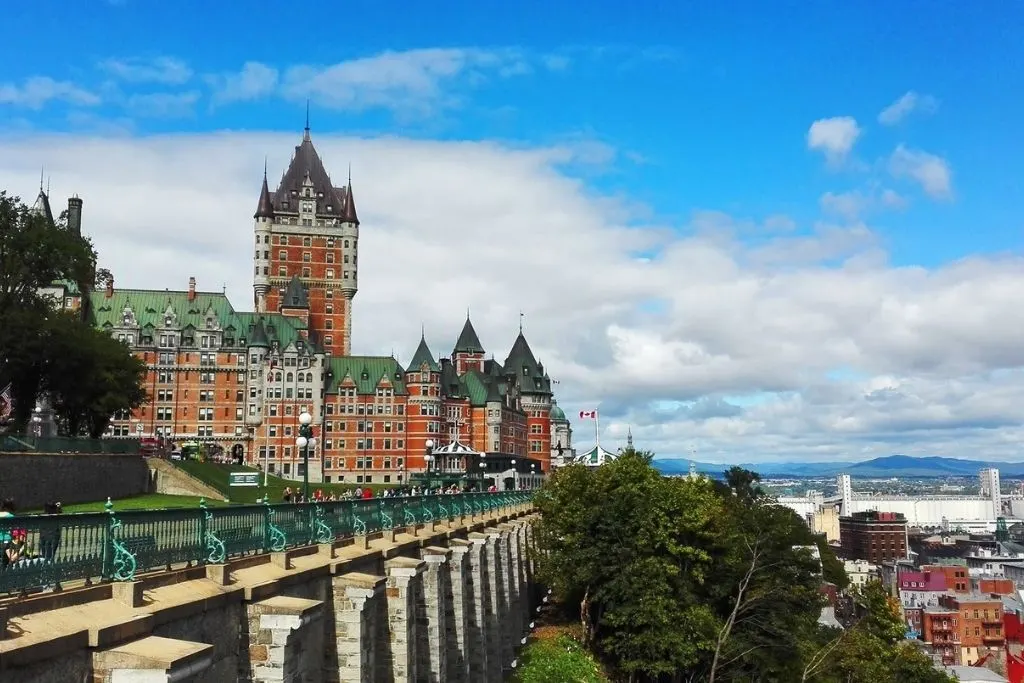
Ontario and Quebec are much like the Prairies when it comes to extremes of hot and cold. And with four distinct seasons annually, weather fluctuates throughout the year.
So, summers are hot and humid, while winters are cold and snowy. And then spring and fall are a mixed bag of snow and rain as well as cool and comfortable temperatures.
However, one of the warmest regions in all of Canada is Ontario. Therefore, between June and September, temperatures range from 68 to 77°F.
Although, they can often rise in southern Ontario to 86°F, with the addition of humidity too – something that happens in Southern Quebec too.
Also know that both provinces are massive and that weather varies depending on how far north or south you travel.
Therefore, the further north you travel, the more comfortable the summer weather will be. Although, winters can see average snowfalls that total upwards of 7 feet. So, be prepared!
Best Time to Visit Canada – Maritimes Weather (Nova Scotia, Prince Edward Island, New Brunswick, Newfoundland & Labrador)
Eastern Canada, known as the Maritimes, is a mix of a slightly continental and mostly coastal climates.
So, on average, the summers are short and mild, but wet. In the winter, though, many areas are cold and experience a lot of snow, in addition to incredibly strong winds.
Therefore, the best time to visit the Maritimes is between June and September. Not only will everything be open but you’ll experience lovely weather too.
However, do realize that there is no such thing as “normal” summer weather in Atlantic Canada. Yeah, thanks to the Atlantic Ocean visitors can expect crazy rain storms and then clear skies a few hours later.
In general though, average summer temperatures for the Atlantic provinces of Nova Scotia, Prince Edward Island, and New Brunswick are in the upper 70s.
Additionally, Newfoundland and Labrador are very similar climatically to the southern Maritime provinces, though they feature slightly cooler temperatures.
After all, summer temperatures hover near 61°F while winter temperatures are around 32°F. Also be aware that winters in Newfoundland and Labrador are much harsher than in the south.
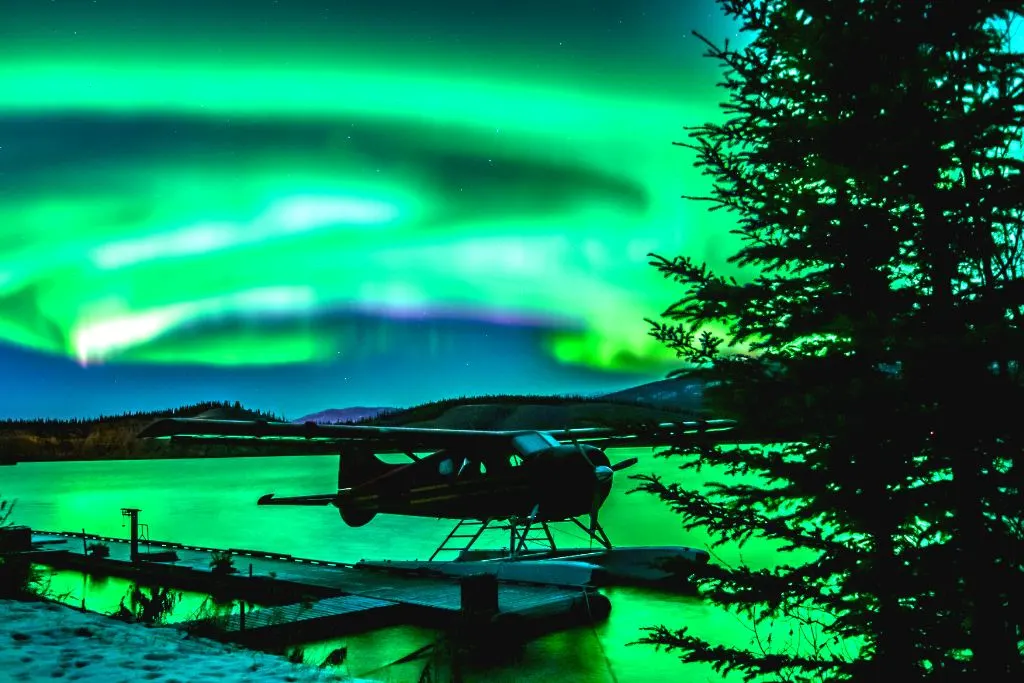
The Canadian Territories include anywhere in mainland Canada that is above latitude 60° north and west of Hudson Bay.
Plus, it includes all the islands north of the Canadian mainland from James Bay to Queen Elizabeth Islands.
As a result, The Yukon, Northwest Territories, and Nunavut see a big variation in temperatures because of their subarctic climate.
That means that they experience short, warm summers, with highs upwards of 68°F, and then experience a rapid drop in temperatures in the fall, with winter temperatures often around 40°F or cooler.
Now, for the Northwest Territories, July is the most favorable month for comfortable temperatures of between 68°F and 77°F.
In turn, January is the coldest month, with an average of -6°F, while April is the driest month.
In also worth noting that the coldest, and most remote part of this region is Nunavut. Summers can be mild, with average temperatures between 42 and 52°F, while winters are frigid and harsh, averaging between-17 and -26°F.
Fun Fact: Eureka, Nunavut is the coldest place in Canada, with temperatures averaging −3°F for the year!
When Can You Visit Canada on a Budget?
Budget travelers can visit Canada between January and March as well as between mid-September and November since this is considered the off season in Canada.
With that said, Canada is not a cheap place to travel to. So, for travelers on a budget, you can comfortably plan to spend between 55 and 75 USD a day.
However, to stay within this budget you’ll have to stay in hostels, use public transportation, and stick to free activities.
What is the cheapest time to visit Canada?
For those traveling by air, the cheapest month to fly into Canada is January. Usually, at the start of every new year, you’ll find plenty of deals on flights, in addition to various other travel discounts.
You’ll also love that January through the beginning of March is off season for Canadian travel, thanks to the harsh winter. weather So, many hotels will offer insanely discounted rates.
Therefore, is a little bit of cold and snow doesn’t scare you off, then the best time to visit Canada for you would be in January.
What month is the hottest in Canada?
The hottest month in Canada is July! During this peak summer month temperatures average 77°F for the high and 63°F for the low.
And while July is on average the hottest month, temperatures vary depending on where you travel.
It’s also worth noting that the hottest city in Canada is Toronto, with temperatures reaching daily highs of 86°F.
Plus, many other parts of Canada also experience high humidity during the summer months, making the temperatures feel even warmer.
How many Days do you Need in Canada?
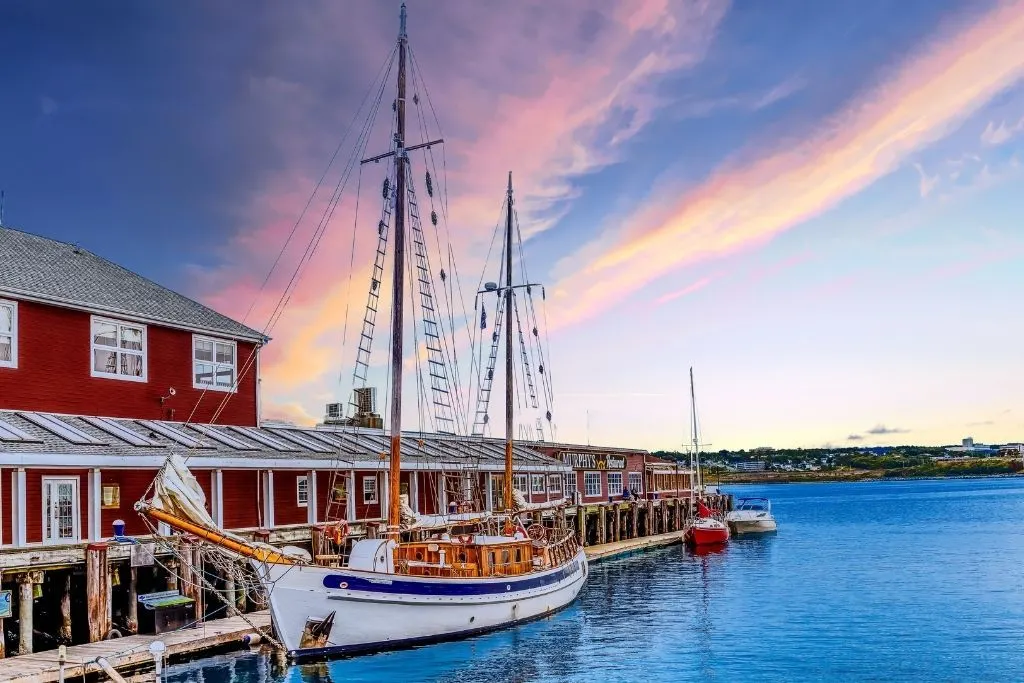
Most visitors to Canada can stay in the country for up to 6 months. However, most tourists have a limited amount of time to travel.
So, it’s best to choose one area to focus on during your trip since Canada is hella massive. Then, you can always return to visit another region or province that interests you.
Personally, I recommend that you spend a minimum of between 10 and 14 days in Canada. And while you’ll only be able to see a small portion of the country, it’s a good start!
And when you spend between 10 and 14 days in Canada, you’ll be able to focus on a particular area, like the East Coast or the Rockies.
One thing to note though is that for most Canadian itineraries you’ll need a vehicle. So, be sure to book your rental car far in advance of your road trip!
Is it good to visit Canada in May?
May is an ideal time to visit Canada! During May all the trees and flowers will start to bloom. The rain of early spring also starts to lessen and the days start to warm.
Therefore, the month of May is easily one of the best times to visit Canada in terms of weather. Plus, you’ll beat the summer crowds and prices will still be affordable.
Additionally, most seasonal hotels and attractions start to open in May. So, you’ll find plenty of things to do!
Plus, many festivals take place throughout May in Canada, like the always popular Canadian Tulip Festival in Ottawa.
And if you’re hoping to enjoy outdoor activities, May is perfect! It means comfortable weather, fewer insects, gushing waterfalls due to snow melt, and lots of open hiking trails.
Best Time to Go to Canada For Families

Most kids are off school for summer vacation from the end of June through August. So, the best time to go to Canada for families is during the summer.
After all, families can enjoy the optimal weather which includes plenty of sunshine and warm temperatures.
Plus, visiting during the summer means that everything, from top attractions to museums, is open!
However, summer is also the prime tourist season in Canada! So, you’ll want to book your holiday the year before you go. This will ensure you get the accommodation you want as well as cheaper flights for the entire family.
And while you’re at it, pack your patience since this is the best time to visit Canada that includes large crowds.
Best Time to Go to Canada to Avoid the Crowds
When traveling to Canada the best time to avoid crowds is either frim May to June or from September through October. Though, when you visit largely depends on what you want to do.
So, if you’re looking for warm temperatures, visit between mid-May and the end of June. This will help you beat peak tourist season and will ensure that all seasonal attractions are open.
But, for those looking for cooler temperatures, consider visiting between September and October. Most tourist attractions will still be open and with the kids back to school, you’ll avoid large summer crowds.
Additional Canada Resources You’ll Love
- Pros and Cons of Living in Canada
- Best Places to Live in Canada
- Best Brunch in Montreal
- Romantic Getaways in Nova Scotia
- Best Brunch in Vancouver
- Best Hikes in Vancouver
- Best Brunch in Toronto
- Best Souvenirs from Canada
There you have it! That just about wraps up this guide to the best time to visit Canada.
Tell me, when is your favorite time to visit Canada?
And if you found this post useful, don’t forget to join our email list before pinning this post now so that you can read it again later.
